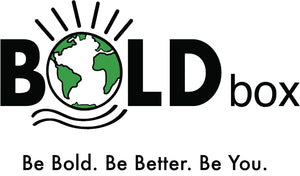GOT MILK?
WHAT MILK SHOULD I CHOOSE?!

I bet you didn’t know you were potentially messing up via your milk of choice, did you?! (insert a lot of laughter because...live your life). BUT, the environmental implications of milk and dairy products are hard to ignore. Now, I’d like to preface this post with the disclaimer that I am a human who grew up drinking and consuming dairy products, and I absolutely love them! Buttt it was hard for me to ignore what my dairy consumption was doing, and as you know, I’m all about making small changes that eventually lead to a larger impact.
SO unless you have your own cow in your own backyard that you can go milk every week, the conversation of what non-dairy milk to buy and consume needs to be discussed. Non-dairy milk now makes up 12% of the global milk sales according to Euromonitor as the movement to make environmentally-conscious swaps amongst citizens is growing.
Now you may be asking: what are my options? Let me tell you!
- Dairy Milk
- Soy Milk
- Almond Milk
- Oat Milk
- Coconut Milk
- Rice Milk
...there are others, but let’s just focus on 1-6

DAIRY MILK
- The environmental impact: Without a doubt, cow milk production has the greatest environmental impact. It takes roughly 30 gallons of water to produce 1 glass of cow’s milk, and that water consumption doesn’t include the water that’s used to keep the production areas clean. On top of water consumption, large quantities of grain are required to feed the livestock. Cows also contribute to climate change, as they produce a large amount of methane, which is a greenhouse gas. The US Food and Agricultural Organization estimates that the dairy industry contributes 4% of human-caused greenhouse gas emissions, and specifically, one daily glass of milk by US Citizens accounts for 2% of the United States’ greenhouse gas emissions--52% of which is methane.
- The health benefits: Cow’s milk is very nutrient-dense, especially in comparison to the vegan alternatives. It contains high levels of calcium, protein, vitamin D and potassium
SOY MILK
- The environmental impact: Soy requires vast amounts of land, water, and pesticides to produce. Soy crops have to be genetically modified in order to withstand weather conditions. BUT the worst part about soy’s environmental impact is it’s destruction of the rainforest. Large areas of the Amazon are being cut down in order to make more room for soy crops.
- The health benefits: Soy milk is the closest in terms of nutritional value to cow’s milk, with macro nutrients, carbohydrates, and fat.
ALMOND MILK
- The environmental impact: It takes 23 US gallons of water to produce just 1 glass of almond milk. With 80% of the world’s almond coming from California, which has been in a severe drought for the last decade, this water consumption is even more drastic with it’s impact.
- The health benefits: Almond milk only provides a fraction of the health benefits that whole almonds do, as almond milk is generally only 2%-3% almonds. The benefit is that it is low in calories and is still a better alternative to soy and dairy milk.
OAT MILK
- The environmental impact: Oats require 1/6th the amount of water to grow as almonds. Oat milk also expels less carbon into the atmosphere compared to other forms of milk. This means that the only real environmental impacts lie in shipping and packaging.
- The health benefits: Oat milk can help fight bad cholesterol, contains vitamin B, iron, and studies are showing its benefits in bone and health since it contains beta-glucans, a soluble fiber. Some companies also add vitamins like B and D, calcium, and potassium.
COCONUT MILK
- The environmental impact: Coconut milk has a very low environmental impact. Coconuts take very little water to be produced and the coconut trees filter out carbon monoxide in the air. The only major impact coconut milk has on the environment are the packaging and shipping impacts.
- The health benefits: Most coconut milk manufacturers fortify it to make it healthier, because as it is processed, it becomes only a fraction coconut and is mostly water.
RICE MILK
- The environmental impact: Rice requires A LOT of water to be produced, but there are new varieties of rice being used in farming that lend to less damaging impacts. The problem with those varieties? Some of them are genetically modified, which can be unsafe for consumption.
- The health benefits: Rice milk is generally fortified, which helps the consumer to be provided with added vitamins with lower calories. Rice milk is low in protein though, so if that’s a benefit you’re looking for, this isn’t your best option.
So what’s the conclusion? We all love a good milk mustache (PLEASE appreciate the photo of Harrison Ford below), but maybe it’s time to switch to an oat-stache (that can be a thing, right?). Oat milk is by far our new favorite milk-alternative option as it has the lowest impact combined with the highest nutrients, and the best flavor!
Of course, we’re here to give you the basic facts and all we can ask is that you make the best decisions for your life/lifestyle and take environmental impact into consideration. So, drink up and enjoy!


Very informative and well written. Thanks. I’ve been consuming almond milk for a while, and recently added more dairy in the form of cheese and yoghurt for the acidophilus – to add to my microbiota. Been off cow’s milk mostly for a long stretch. Hadn’t thought of oat milk before reading this.